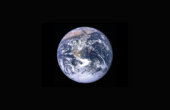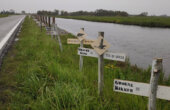City of Weeds: Tracing the Origins of the Urban Ecological Imaginary
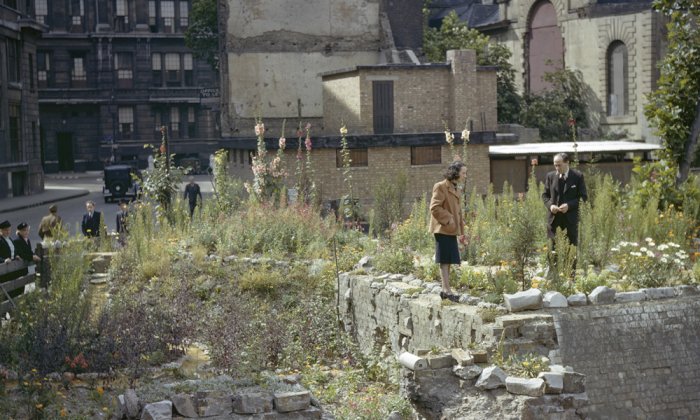
The starting point for my new book “Natura Urbana,” from which the following article is excerpted, is my earliest childhood memories of wastelands in inner London: the precarious spaces hidden in the midst of the city that were carpeted with flowers and humming with bees. For many observers of the urban realm these “accidental gardens” have served as miniature laboratories in which we can explore the spontaneous dynamics of urban nature.
In the wake of the Covid-19 pandemic many people have discovered the delights of nature on their doorstep. Yet there is a much longer history to this fascination with urban nature — one that I explore below — that takes us back to the search for medicinal plants in the early-modern era, the cosmopolitan flora of ruins in the 19th-century, and the distinctive ecological assemblages emerging from the rubble of war-time destruction in the 20th-century.
In 1973, the British writer Richard Mabey published a paean to the spontaneous exuberance of urban nature, inspired by the marginal landscapes of deindustrializing London in the early 1970s. “The Unofficial Countryside” presents an alternative sensibility toward nature that eschews either a narrow scientism or a romanticist attachment to the idea of pristine wilderness. Mabey’s observations connect with a wealth of nature writing that draws together aspects of popular science, vernacular landscape culture, and a wider sense of curiosity or enchantment with everyday objects and spaces.
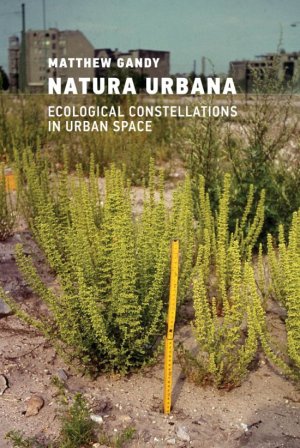
But interest in spontaneous forms of urban nature dates back much further. It stems from early distinctions between “wild plants” growing in and around cities and “cultivated plants” largely confined to parks and gardens. Early studies of wild urban flora include botanist Joseph Pitton de Tournefort’s treatise on the plants of Paris and its environs, published in 1698, which places particular emphasis on species with medicinal properties. Using a pre-Linnaean nomenclature Tournefort meticulously recorded all the plants that he could find, along with references to over 60 other botanical works to provide a vibrant snapshot of the state of scientific knowledge at the time.
The 17th century also saw some of the first botanical “rambles” through semiwild places near cities, producing records which remain of significant ecological and historical interest. The apothecary Thomas Johnson’s guide to the plants of London’s Hampstead Heath, for example, published in 1629, represents the first local flora compiled in Britain. Johnson describes how he set out with some excitement, along with a group of friends, on the morning of August 1, 1629 for a botanical excursion “undeterred by the lowering sky” and a rainstorm on the way.
During the 19th century we find growing scientific attention devoted to the distinctiveness of urban nature including the botanical characteristics of walls, ruins, and unusual plants growing on “ballast hills” near ports. In 1855, for example, botanist Richard Deakin compiled the “Flora of the Colosseum of Rome,” recording some 420 species of plants growing on the 2,000-year-old ruin, including “some plants so rare in western Europe that they may have arrived as seeds caught in the fur of gladiatorial animals from North Africa.” Deakin laments the loss of many species due to various “alterations and restorations,” mourning the loss of the building’s “wild and solemn grandeur,” and contrasting the barbaric spectacles of the past with the quiet profusion of life amidst the ruins. In the event, however, it would prove to be the consolidation of the modern Italian state after 1861 that led to the “tidying up” of the site and removal of many of the interesting plants.
By the late 19th century several guides to wild urban nature had been published reflecting factors such as improving transport connections and the burgeoning membership of scientific societies. In Edmond Bonnet’s “Petite Flore Parisienne,” for example, published in 1883, he exhorts Parisians to delight in “the knowledge of spontaneous vegetation.” In 1893 the nature writer Richard Jefferies published a collection of essays entitled “Nature Near London,” in which he notes how his “preconceived ideas were overthrown by the presence of so much that was beautiful and interesting close to London.”
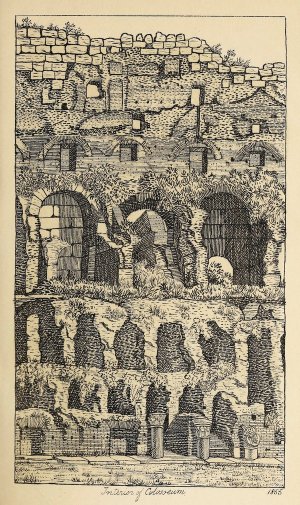
By the early 20th century the unusual plants growing on disturbed ground had become a sustained focus of botanical curiosity: In 1912, for example, an article describing the vibrant flora of London construction sites speculated on the reasons why these ostensibly empty spaces were transformed so rapidly into diverse botanical assemblages. The survey notes various factors such as the arrival of birds, spilled forage for horses, and the presence of garden escapes, but singles out the “clouds of seeds” carried by the wind that “could be seen floating in every direction” as the determining element in many of these ruderal ecologies.
The botanist Paul Jovet, from the Muséum National de l’Histoire Naturelle in Paris, is widely regarded as the first modern scientist to devote his full attention to the spontaneous flora of cities. Jovet recognized that urban vegetation was a distinctive kind of ecological mélange (mixture), comprising a bewildering array of plants from all over the world that not only disrupted existing conceptions of plant associations but was itself in a state of constant flux through the impact of human activities such as construction or piétinement (trampling). He carried out a series of meticulous studies of the flora of urban wastelands during the 1930s and 1940s, which were formative for a later generation of botanists including Herbert Sukopp, who led the study of West Berlin from the 1960s onward and remains the most influential figure in the field.
Sukopp’s initial fascination with urban ecology was spurred by early studies of the unusual flora associated with postwar rubble landscapes. However, as geopolitical division intensified, including the building of the Berlin Wall, Sukopp and his colleagues increasingly turned their attention to the flora of the island city, which provided an elaborate complex of experimental field sites. The studies by Sukopp and his colleagues, based at the newly created Institute of Ecology at the Technical University in Berlin, produced some of the most detailed surveys of urban flora that have ever been produced, pushing modes of cartographic representation to their limits. Not only did these studies rework existing phytogeographic approaches to botanical research, but they also provided a welter of socioecological insights into the changing structure of urban space over time.
The emergence of urban ecology as a distinctive subfield within the biological sciences has developed significantly since the early 1970s. The botanist Paul Duvigneaud, for example, defined urban ecology from a metabolic perspective, revealing continuities with organicist conceptions of the 19th-century metropolis as well as with the systems-based engineering of Abel Wolman and his contemporaries. Yet the uncertain relationship between the science of urban ecology and the nascent environmental movement revealed tensions between the modeling of biophysical processes and the production of space.
In contrast to the more confident assertions of Duvigneaud about the coherence of urban ecology as a scientific field, other authors questioned the lack of any clear theoretical basis for the study of urban nature. In a provocative article for the journal Capitalism, Nature, Socialism, for example, the Berlin-based ecologist Ludwig Trepl found that although knowledge of biophysical processes in cities had advanced significantly, the nature of ecological relationships with social, cultural, and economic processes remained in a state of flux and confusion. In particular, Trepl, echoing Adorno, suggested that the presence of weeds and other spontaneous forms of urban nature posed a challenge for ecological thinking that was rooted in bourgeois conceptions of unintentional nature as the antithesis of urban space.
A distinctive aspect to the ecological dynamics of cities is the transitory or frequently disturbed character of many sites, which has long formed a focus for both cultural and scientific explorations of urban space. These marginal spaces are typified by an array of so-called “pioneer species,” specially adapted for the colonization of new substrates, which can engender rapid and unexpected changes in the appearance of urban landscapes.
“At the end of the war,” writes W. G. Sebald, “some of the bomb sites of Cologne had already been transformed by the dense green vegetation growing over them — the roads made their way through this new landscape like ‘peaceful deep-set country lanes.’”
Examples include the yellow-flowered crucifer known as London rocket (Sisymbrium irio), which spread quickly in the burnt spaces of London after the Great Fire of 1666, and the purple spikes of rose-bay willow herb (Chamaenerion angustifolium). The latter had been considered relatively scarce under natural conditions, sporadically appearing in burnt patches on heathlands, for example, until it suddenly filled the bombsites of London and other European cities in the 1940s. “At the end of the war,” writes W. G. Sebald, “some of the bomb sites of Cologne had already been transformed by the dense green vegetation growing over them — the roads made their way through this new landscape like ‘peaceful deep-set country lanes.’” In Hamburg, there was a “second flowering” of chestnuts, lilacs, and other trees in the autumn of 1943, just months after the devastating firestorm that had laid much of the city to waste. In Sebald’s hands, the term “natural history” invokes powerful connections between materiality, the production of meaning, and the limits to representation: precisely those elements that have yet to emerge within the field of urban ecology itself.
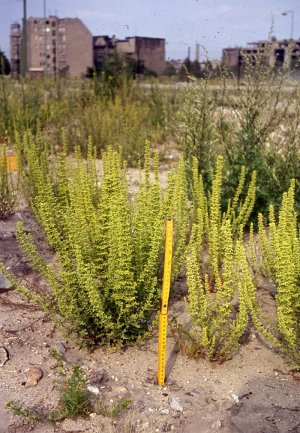
Studies of the natural regeneration of damaged sites in cities such as Berlin, Bremen, and Kiel, and the emergence of new ecological patterns and assemblages, also began to reshape aspects of ecological science and the classification of different vegetation types. As a consequence, the idea of the “cultural landscape” as a recognizable and regionally specific aesthetic unity was irrevocably altered, with both methodological and ideological implications for the study of nature and landscape.
The emerging emphasis on the “cosmopolitan ecology” of cities, highlighting the role of adventitious or introduced species, served as an implicit critique of nativist approaches to landscape design and pervasive antiurban sentiments within conservative strands of environmental thought. Traces of spontaneous nature acquired a double significance as markers for an explicitly urban ecological paradigm as well as symbolic indicators for shifting ideological contours in the urban landscape.
The geographer Gerhard Hard, for example, used studies of ruderal vegetation in the city of Osnabrück as part of his detailed critique of the aesthetic, epistemological, and ideological limitations of existing approaches to the interpretation of landscape. For Hard, a close engagement with both the ecological and ideological complexity of ordinary landscapes not only carried implications for the understanding of the socioecological dynamics of urban space but also enabled a more broadly framed critique of the reactionary legacies of botany, geography, and other disciplines.
Some increasingly ubiquitous plants are now termed “invasive” on account of their ability to outcompete other species and effectively reduce biodiversity: In some cases these are indigenous species that have dramatically expanded their range in response to changing urban ecologies, such as traveler’s joy (Clematis vitalba), and in other cases they are accidental introductions or ornamental escapes.
In a European context examples include Japanese knotweed (Reynoutria japonica) from Asia and giant hogweed (Heracleum mantegazzianum) from the Caucasus. A recent study of the Paris region lists 10 invasive species which are already regarded as having a deleterious ecological impact, along with a further 12 potentially invasive species.
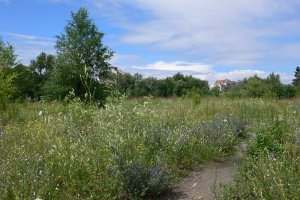
In Chinese cities a number of invasive plant species have been a focus of attention including the sumac (Rhus typhina) from North America, which was initially chosen as a fast-growing addition to afforestation and landscape design projects, and also a type of ornamental spurge (Euphorbia dentata) that escaped from the garden of Beijing’s Institute of Botany and originates from the Americas. In some cases, there are conflicting conceptions of what constitutes an invasive species: The so-called “butterfly bush” or buddleia (Buddleia davidii), of 19th-century Chinese origin, is a very widespread and characteristic flowering shrub in many European cities, with its distinctive panicles of purple flowers, but its localized dominance can exclude many other species and even cause structural damage to walls and other surfaces. Yet it is the global characteristics of urban ecologies, and their myriad potential socioecological configurations, that underpin their cultural and scientific interest: The question of value is no longer reducible to a nativist aesthetic or preexisting ecological template.
The intersections between ecological science and changing conceptions of urban nature are perhaps most strikingly illustrated by the emphasis on wastelands as the focal point for high levels of biodiversity in cities. Previously neglected or overlooked spaces have been reframed as safe havens for nonhuman forms of urban life. These marginal spaces are now recognized as part of the ecological infrastructure of the city, extending to roles such as flood control, water purification, and the mitigation of the urban heat island effect.
Marginal spaces are now recognized as part of the ecological infrastructure of the city, extending to roles such as flood control, water purification, and the mitigation of the urban heat island effect.
An extensive survey of brownfield sites in the Hauts-de-Seine area of the Paris region, for example, found that they contain nearly 60 percent of all species recorded in the region — far higher than parks, gardens, and other typical elements of urban green space. Rather than clearly differentiated vegetation zones, as postulated by the pioneers of ecological science, urban ecologists have emphasized how the city comprises a lattice of microniches varying by substrate, aspect, time, and other factors. Linear spaces such as roadside verges or railway embankments can form green corridors or “eco-ducts,” a term first used in a Dutch context, that allow small populations of vulnerable species to be connected while also playing a role in the dispersal of new species, so that plants, for example, may spread their seeds in a radial pattern across the city. Eco-ducts serve as a kind of infrastructure network for the nonhuman and can even be intentionally incorporated into ecologically oriented variants of landscape design.
The concept of biodiversity contains elements of ambiguity between the idea of ecosystem diversity (which is high in urban areas), species diversity, and genetic diversity. However, as David Takacs shows in his book “The Idea of Biodiversity,” the very idea of biodiversity is as much a mirror of entanglements between different cultural and scientific discourses as any putative representation of external nature.
In an urban context, the concept of biodiversity becomes even more difficult to determine, especially when used in relation to wider conservation objectives, such as the protection of rare species or vulnerable habitats. How, in other words, do we apply the concept of biodiversity to what Bernadette Lizet terms the “ordinary nature” encountered in cities?
The production of inventories of rare or threatened species in order to influence policymaking dates from the first so-called “Red List” produced by the International Union for Conservation of Nature in 1963. Since that time the use of Red Lists has extended to encompass different tiers of government as well as an expanded range of life forms. An increasing number of cities now have their own Red Lists for plants, animals, and even invertebrates, as insights from urban ecology become connected with scientifically inflected strands of urban environmental discourse. Ecologists in Berlin and elsewhere have successfully argued for the inclusion of nonnative species in lists of endangered urban species on the basis of their vulnerability rather than their geographical origin.
Yet these emerging intersections, which I examine more deeply in “Natura Urbana,” reveal tensions between the role of technical expertise — in this case urban ecology — and the contested political exigencies of the urban arena. What are the wider cultural and political implications of the recent surge of enthusiasm for urban nature? How should we interpret the marginal or interstitial spaces of urban nature that have been a source of cultural and scientific fascination? To reframe marginal spaces of nature as a vibrant dimension to urban life introduces a different kind of complexity into the socioecological landscape of cities, one where questions of access, design, and land ownership are radically juxtaposed with insurgent forms of cultural and scientific practice.
Matthew Gandy is Professor of Geography at the University of Cambridge and the author of “Concrete and Clay,” “The Fabric of Space,” and “Natura Urbana,” from which this article is adapted.
